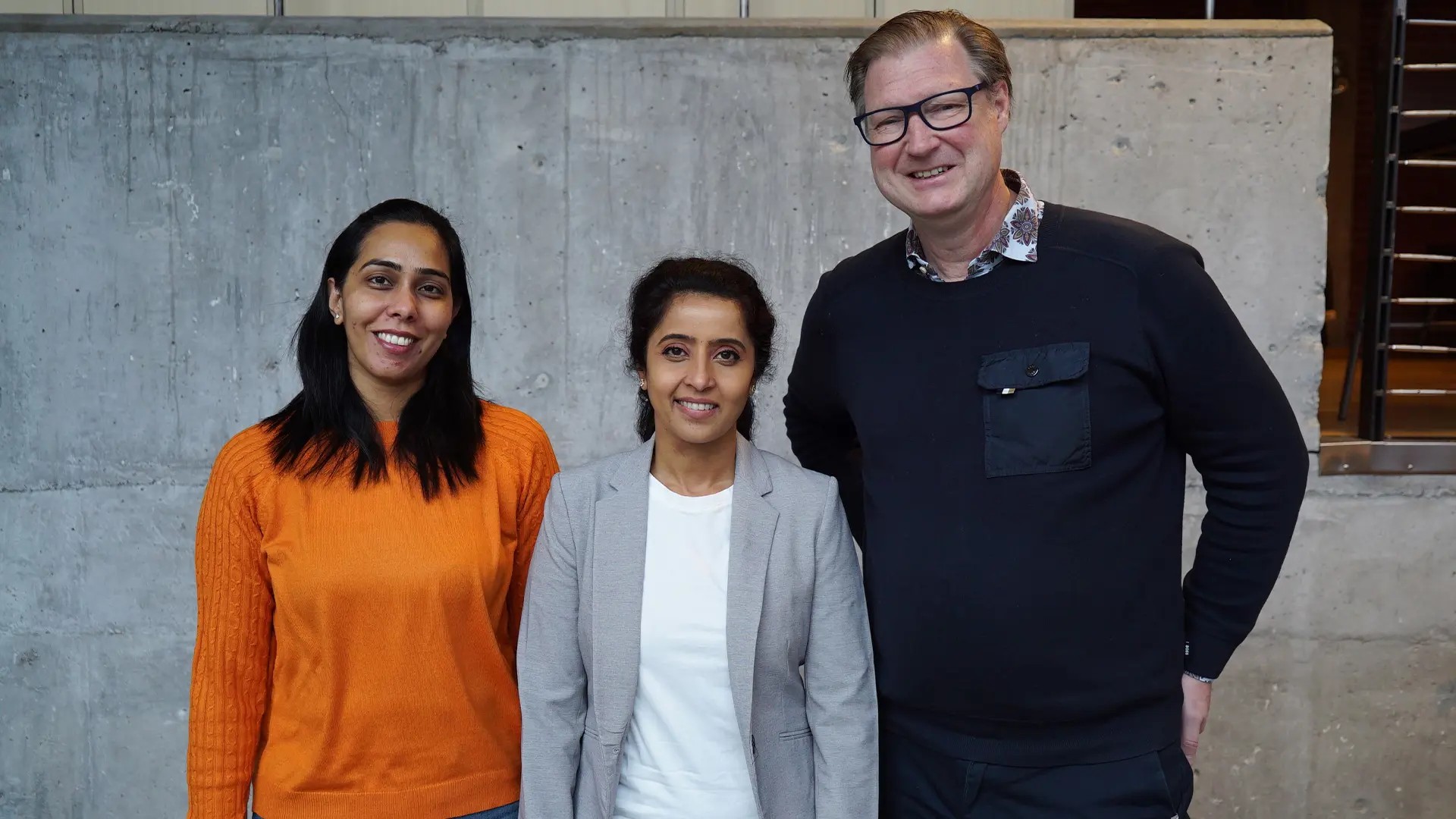
Chalmers’ research team in structural batteries is advancing the development of next generation structural batteries through a strategic collaboration with Professor Madhavi Srinivasan and her team at NTU in Singapore. The collaboration is made possible through the research programme Wallenberg Initiative Materials Science for Sustainability (WISE).
Electric vehicles can be considered as a key component in achieving sustainable transportation and reducing carbon emissions. However, a significant challenge lies in optimising energy storage to extend their range. A promising solution to this challenge is the development of structural batteries, where the structural components within the vehicle itself function as batteries.
Chalmers’ research team focusing on structural batteries was enhanced earlier this year when Professor Madhavi Srinivasan from Nanyang Technological University in Singapore was appointed Chalmers’ WISE guest professor.
“The team at Chalmers is the world leader when it comes to structural batteries, so it was a privilege to be chosen as WISE guest professor and get the opportunity to collaborate with them,” says Srinivasan.
We call it a circular economy for a sustainable future.
The Wallenberg Initiative Materials Science for Sustainability (WISE) is a research programme by the Knut and Alice Wallenberg Foundation, aiming to facilitate a sustainable society by researching next generation of ecofriendly materials and manufacturing processes.
“Being able to attract such distinguished professors as Madhavi to join the programme really builds credibility in the significant effort of WISE and puts faith in that we are able to succeed in our research,” says Leif Asp, professor in Material and Computational Mechanics at the Department of Industrial and Materials Science, and leader of Chalmers’ research team in structural batteries.

Professor Srinivasan brings valuable insights and expertise to Chalmers’ ongoing research, and she most recently visited the university in November, giving a lecture on next generation batteries and recycling of batteries.
“My research focuses on both sides of the coin: one is finding ways to power this electrical future; the other is recycling of used batteries by extracting essential materials from them to make new batteries that could be used for the same application again. We call it a circular economy for a sustainable future,” she says.
Advancing research through collaboration
The collaboration with WISE and Professor Srinivasan strongly benefits the development of structural batteries and helps take the research at Chalmers even further, according to Leif Asp.
“The WISE programme is an opportunity for us to find very strong collaborators in the areas where we see challenges with structural batteries. Where we face difficulties, NTU might have a completely different approach, or a complimentary approach, to what we’re doing here. Then we can build on that and enhance and accelerate the development of our research,” he says, and continues:
“There is a sense of urgency with the WISE ambition to achieve these sustainable materials, to actually reach these emission-free devices, and this collaboration significantly accelerates that process.”

In addition to the challenges of advancing the research, Professor Srinivasan highlights that international collaborations can help with dissemination of the research, making sure it has real impact on the industry and the market.
“It’s always a challenge to bring the research outside of the lab, and that’s where my team attempts to collaborate internationally with key people and with industry, to really facilitate the translation of research from the lab to the market.”
Building bridges and sharing connections
Richa Chaudhary, postdoc in Material and Computational Mechanics at Chalmers, and previously affiliated with NTU, is also part of the collaboration, working in Asp’s research team in structural batteries. Familiar with both universities, she plays an essential part in the collaboration.
“My role is to work like a bridge between Chalmers and NTU, since I know the team back in Singapore and the working culture there, and I understand the working culture here. I’m also aware of the facilities and the testing methods of our material at both sites, and I think this connection between the universities really helps to carry our research forward,” says Chaudhary.

The opportunities of the collaboration also go beyond the research groups in structural batteries and connects the two universities in multiple ways, according to Srinivasan.
“Coming here has also introduced me to broader activities at Chalmers from which I can bring back inspiration and help build a bridge between NTU and Chalmers, connecting more people,” she says.
Besides being a great possibility for Chalmers, Asp thinks that the collaboration with NTU could benefit other universities in Sweden as well.
“It’s important that we share this link that we’ve established with NTU with the other universities in Sweden. We have had people from KTH here during this visit to make sure we do just that, and I think there are many people that are keen to take part of this, both at KTH and elsewhere,” says Asp.
While international research collaborations bring many opportunities, they can be difficult to accomplish, and Srinivasan emphasises the importance of programmes like WISE in enabling such partnerships.
“Often, there is an intention to collaborate but there is no platform. So, I really want to commend the WISE programme for creating an opportunity for professors and researchers to come here and collaborate. It turns the intentions to reality and then to output.”
More information
- Full Professor, Material and Computational Mechanics, Industrial and Materials Science
- Postdoc, Material and Computational Mechanics, Industrial and Materials Science

